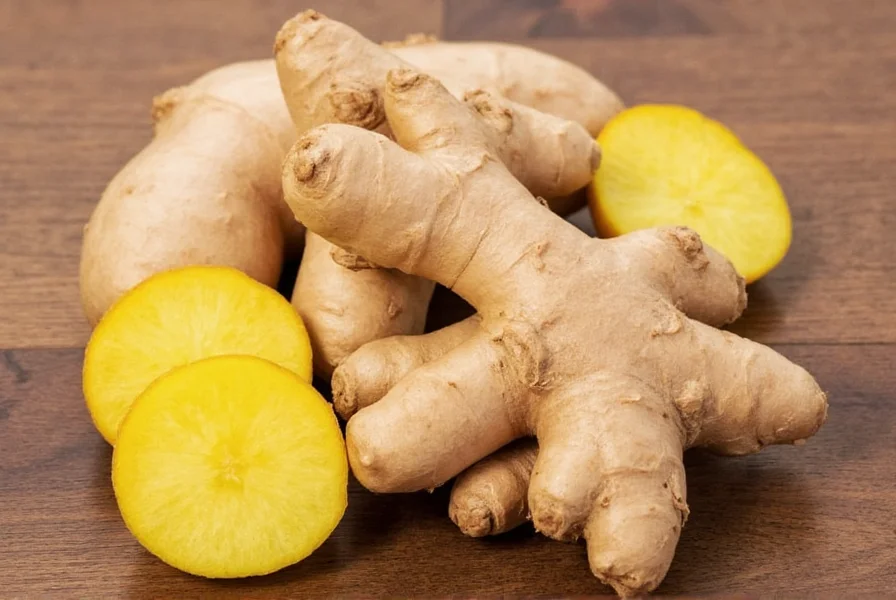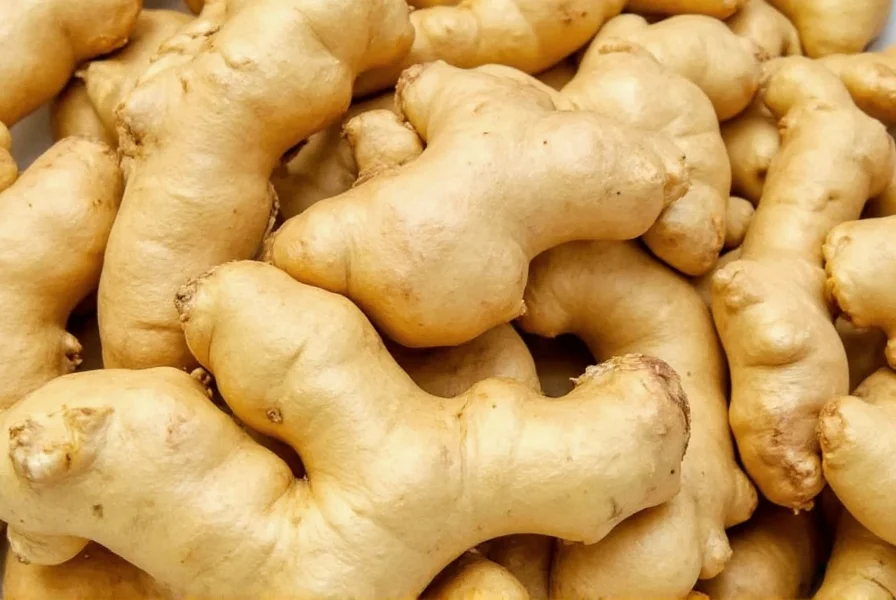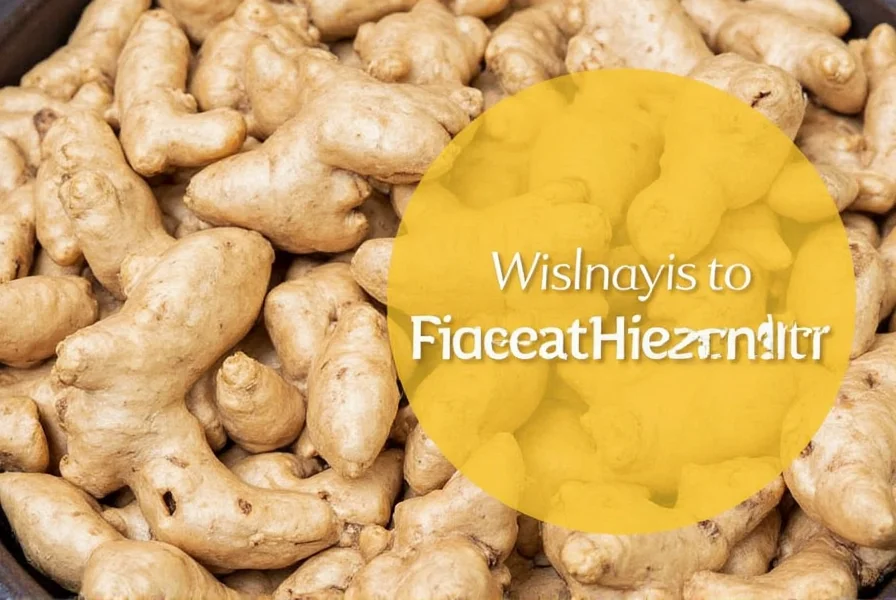Mixed ginger isn't a single botanical entity but rather a culinary and herbal preparation that combines various forms or types of ginger with other complementary ingredients. This versatile blend leverages the complex flavor spectrum of ginger while introducing additional dimensions through strategic combinations. Understanding what constitutes mixed ginger helps home cooks and health-conscious consumers make informed choices about its applications.
What Exactly Is Mixed Ginger?
The term "mixed ginger" typically describes one of two preparations: either a combination of different ginger varieties (such as fresh young ginger, mature ginger, and dried ginger) or ginger blended with other ingredients like turmeric, garlic, lemon, or honey. Unlike single-source ginger products, these blends create more complex flavor profiles and potentially broader wellness benefits through synergistic effects.
Chefs and herbalists create mixed ginger preparations to achieve specific flavor balances or therapeutic properties that single-ingredient ginger cannot provide. For example, adding citrus to ginger creates a brighter profile suitable for seafood dishes, while combining ginger with turmeric enhances anti-inflammatory properties valued in traditional wellness practices.

Culinary Applications of Mixed Ginger Blends
Mixed ginger elevates dishes through layered flavor development that standard ginger preparations cannot match. Professional kitchens frequently use these blends to create signature dishes with distinctive taste profiles. Consider these applications:
| Blend Type | Best Culinary Uses | Flavor Profile |
|---|---|---|
| Ginger-turmeric blend | Golden milk, soups, roasted vegetables | Earthy, warm, slightly peppery |
| Ginger-garlic-citrus blend | Marinades, seafood, stir-fries | Bright, aromatic, complex |
| Ginger-spice blend | Baking, chai, spiced beverages | Warming, sweet-spicy, rounded |
When substituting mixed ginger for regular ginger in recipes, adjust quantities based on the blend's composition. A ginger-turmeric blend typically requires using 25% less than standard ginger measurements due to turmeric's stronger presence. For delicate dishes like fish or fruit preparations, blends containing citrus work better than pure ginger, which might overpower subtle flavors.
Creating Your Own Mixed Ginger Preparations
Homemade mixed ginger blends offer superior freshness and customization compared to commercial products. The basic process involves:
- Selecting high-quality ginger varieties (fresh young ginger provides milder heat while mature ginger offers more pungency)
- Choosing complementary ingredients based on desired flavor profile
- Preparing ingredients using appropriate methods (grating, juicing, or powdering)
- Combining in precise ratios for balanced results
For a versatile all-purpose mixed ginger blend, combine equal parts freshly grated ginger, turmeric, and garlic with a squeeze of lemon juice and a small amount of honey. This mixture works exceptionally well in marinades, salad dressings, and wellness shots. Store in an airtight container in the refrigerator for up to one week, or freeze in ice cube trays for longer preservation.

Selecting Quality Mixed Ginger Products
When purchasing commercial mixed ginger products, examine labels carefully for these quality indicators:
- Minimal ingredient lists with recognizable components
- No artificial preservatives or flavor enhancers
- Clear specification of ginger varieties used
- Production methods that preserve active compounds
Reputable brands will disclose the specific ginger varieties included in their blends and the ratios of complementary ingredients. Products labeled "pure" or "natural" without further specification often contain fillers or lower-quality components. For culinary applications, choose blends with visible ginger particles rather than homogenized pastes, which typically indicate higher quality and better flavor development.
Storage and Preservation Techniques
Proper storage maintains the volatile compounds responsible for mixed ginger's distinctive flavor and potential wellness properties. Fresh mixed ginger blends retain optimal quality for 3-5 days when stored in airtight containers in the refrigerator. For longer preservation:
- Freeze in ice cube trays then transfer to freezer bags (up to 3 months)
- Preserve in vinegar or citrus juice (2-3 weeks refrigerated)
- Dry and powder the blend (store in dark glass jars for 6-8 months)
Avoid storing mixed ginger blends in metal containers, which can react with the acidic components and alter flavor profiles. Glass or food-grade plastic containers provide the best preservation of both flavor and potential bioactive compounds.
Frequently Asked Questions
What's the difference between mixed ginger and regular ginger?
Mixed ginger combines different ginger varieties or blends ginger with complementary ingredients like turmeric, garlic, or citrus, creating more complex flavor profiles and potentially broader applications than single-source ginger. Regular ginger refers to a single preparation method (fresh, dried, or powdered) of one ginger variety.
Can I substitute mixed ginger for regular ginger in recipes?
Yes, but with adjustments. Mixed ginger blends typically require using 20-30% less than regular ginger due to the additional ingredients. For example, if a recipe calls for 1 tablespoon of fresh ginger, use 2 teaspoons of a ginger-turmeric blend. Always consider the specific components of your mixed ginger when substituting.
What are the most common ingredients blended with ginger?
The most common complementary ingredients include turmeric (for earthy warmth), garlic (for savory depth), citrus (for brightness), honey (for sweetness), and various spices like cinnamon or cardamom. Traditional preparations sometimes include ingredients like galangal or lesser ginger varieties to create more complex flavor profiles.
How should I store homemade mixed ginger blends?
Store fresh mixed ginger blends in airtight glass containers in the refrigerator for up to 5 days. For longer storage, freeze in ice cube trays then transfer to freezer bags (up to 3 months), preserve in vinegar or citrus juice (2-3 weeks), or dry and powder the blend (6-8 months in dark glass jars). Avoid metal containers which can react with acidic components.
What should I look for when buying commercial mixed ginger products?
Look for products with minimal, recognizable ingredients, clear specification of ginger varieties used, and no artificial preservatives. Reputable brands disclose the specific components and their ratios. Avoid products labeled simply as "natural flavors" without further specification, as these often contain fillers. For culinary use, blends with visible ginger particles typically indicate higher quality than homogenized pastes.











 浙公网安备
33010002000092号
浙公网安备
33010002000092号 浙B2-20120091-4
浙B2-20120091-4